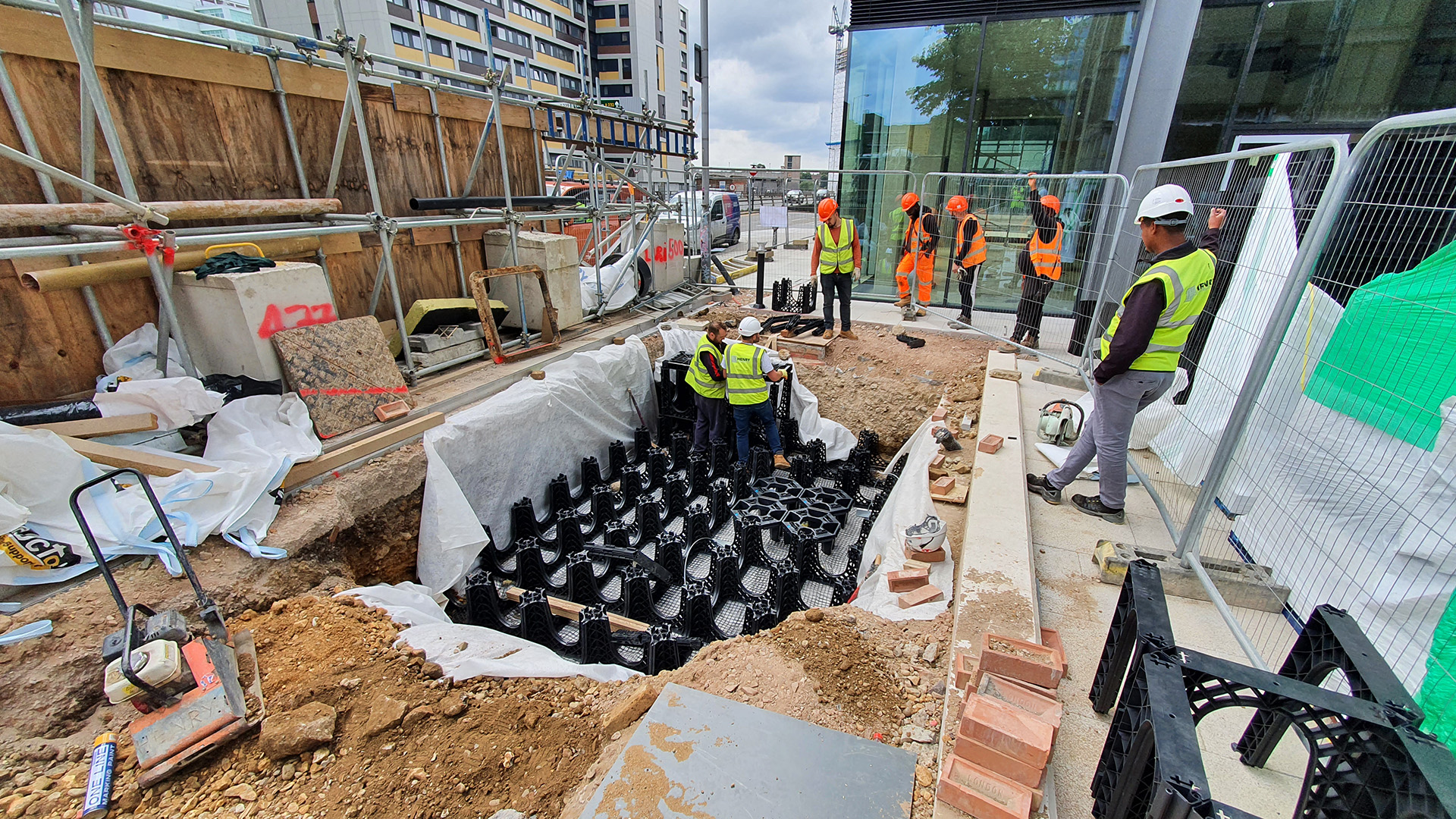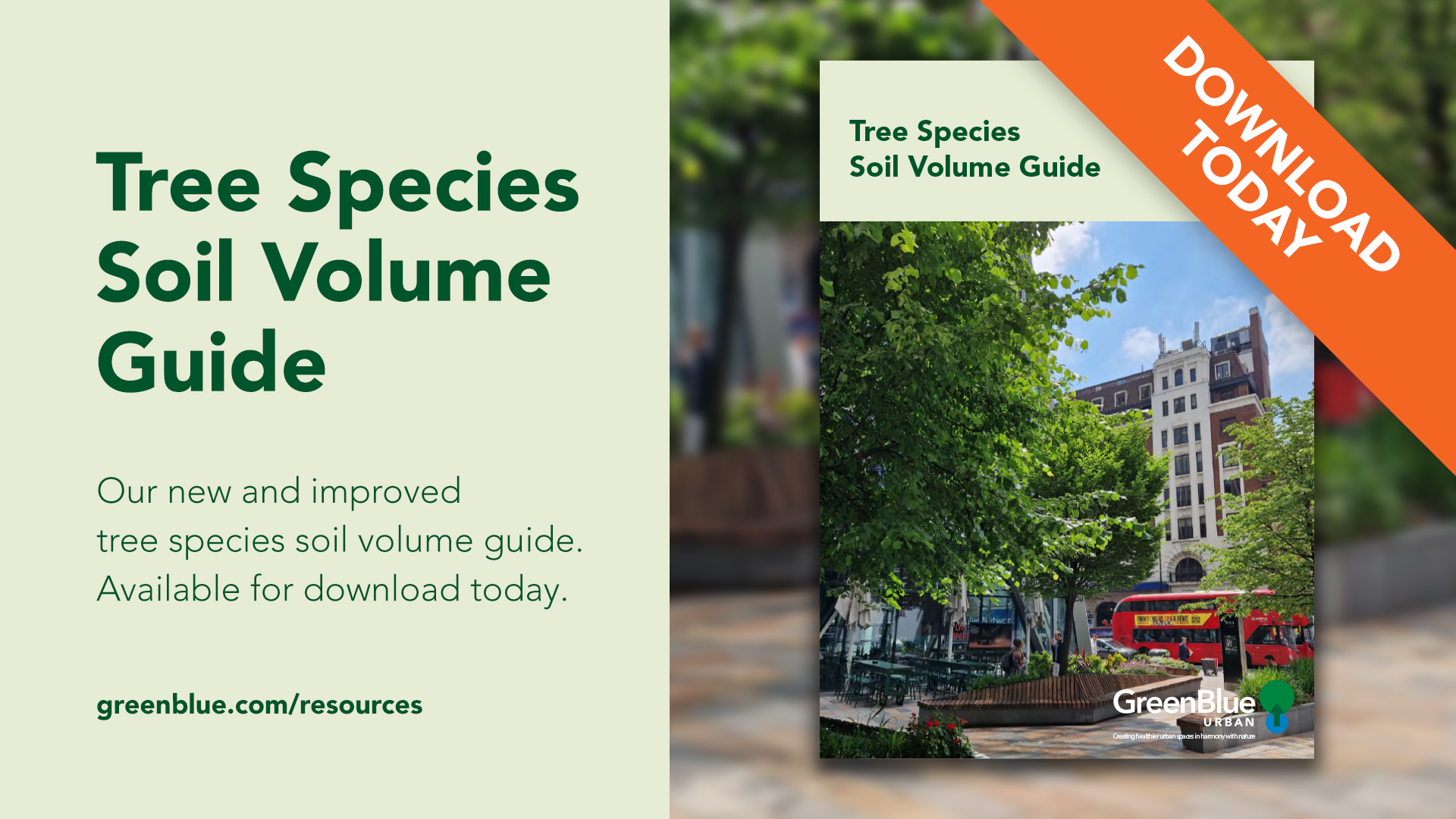Those that have listened to our CPDs and read previous blogs will know the term, Right Tree, Right Place, Right way there are many important factors when considering maximum tree canopy in urban areas, especially when space is limited. Previously we have highlighted the importance of healthy uncompacted aerated soil, being that in poor-quality soil areas where the organic nutrient is limited, we get thin canopies and little evapotranspiration -basically, the known benefits are limited.
Different tree species cope with differing soil and urban conditions, so choosing the right solution is vital, it is also important to consider the below-ground conditions’ such as required space and utilities when choosing an engineered solution, compaction is an ongoing concern with some solutions leading to short-term trees.

The case is simple for a tree to reach maturity it needs healthy uncompacted, aerated soil!
Today we concentrate on soil volume – the most important factor for several reasons, In urban environments, sufficient soil volume allows trees to grow larger and healthier, providing numerous benefits like shade, air purification, evapotranspiration and beautification.
Growth and Root Development: The volume of soil available directly influences growth and root development. Trees require sufficient space for their roots to spread and access nutrients and water. A larger soil volume allows trees to establish a strong root system, leading to healthier and more robust growth.
Nutrient Availability: The volume of soil affects the overall nutrient content and availability. A larger soil volume generally means more nutrients can be stored and made available. This is crucial for their development and productivity.
Water Holding Capacity: Soil volume determines how much water the soil can retain. Soils with greater volume can hold more water, reducing the frequency of irrigation and making it easier for trees to survive during dry periods.

Soil Aeration: Adequate soil volume promotes proper aeration, which means the presence of oxygen in the soil. Oxygen is vital for root respiration and microbial activity in the soil, both of which contribute to a healthy soil ecosystem.
Soil Temperature Regulation: The volume of soil can influence its ability to insulate and regulate temperature. A larger volume can help moderate temperature fluctuations, which is essential for protecting roots from extreme heat or cold.
Soil Microbial Diversity: Larger soil volumes often support a more diverse and robust microbial community. Healthy soil microbes play a critical role in breaking down organic matter, cycling nutrients, and suppressing harmful pathogens, thereby contributing to soil fertility and overall ecosystem health.
Erosion Control: A larger volume of soil can offer better resistance to erosion. In areas with significant rainfall or slope, having ample soil volume can help prevent soil erosion, protecting the soil and any vegetation on it.

Ecological Functioning: In natural ecosystems, soil volume plays a vital role in determining the ecological functioning of the environment. It impacts biodiversity, tree succession, and overall ecosystem resilience.
Soil volume is a fundamental factor that influences the health and productivity of soil fertility, and overall ecosystem functioning. Understanding and managing soil volume appropriately is essential for successful landscaping, and long-term urban tree canopy over.
At GreenBlue, we continuously evaluate our understanding of such important factors for urban tree growth and maturity, having listened to industry colleagues and customers we have reviewed our Soil Volume Guide, which was originally published back in 2019 and has gained kudos in the industry as a go-to for specifying. However understanding of soil types has improved, and has taken additional factors such as water holding capacity and water demand of the tree species including drought periods.
There are many studies available and we accept the publication is intended for guidance only to provide sufficient soil volumes to attain species potential and longevity.


